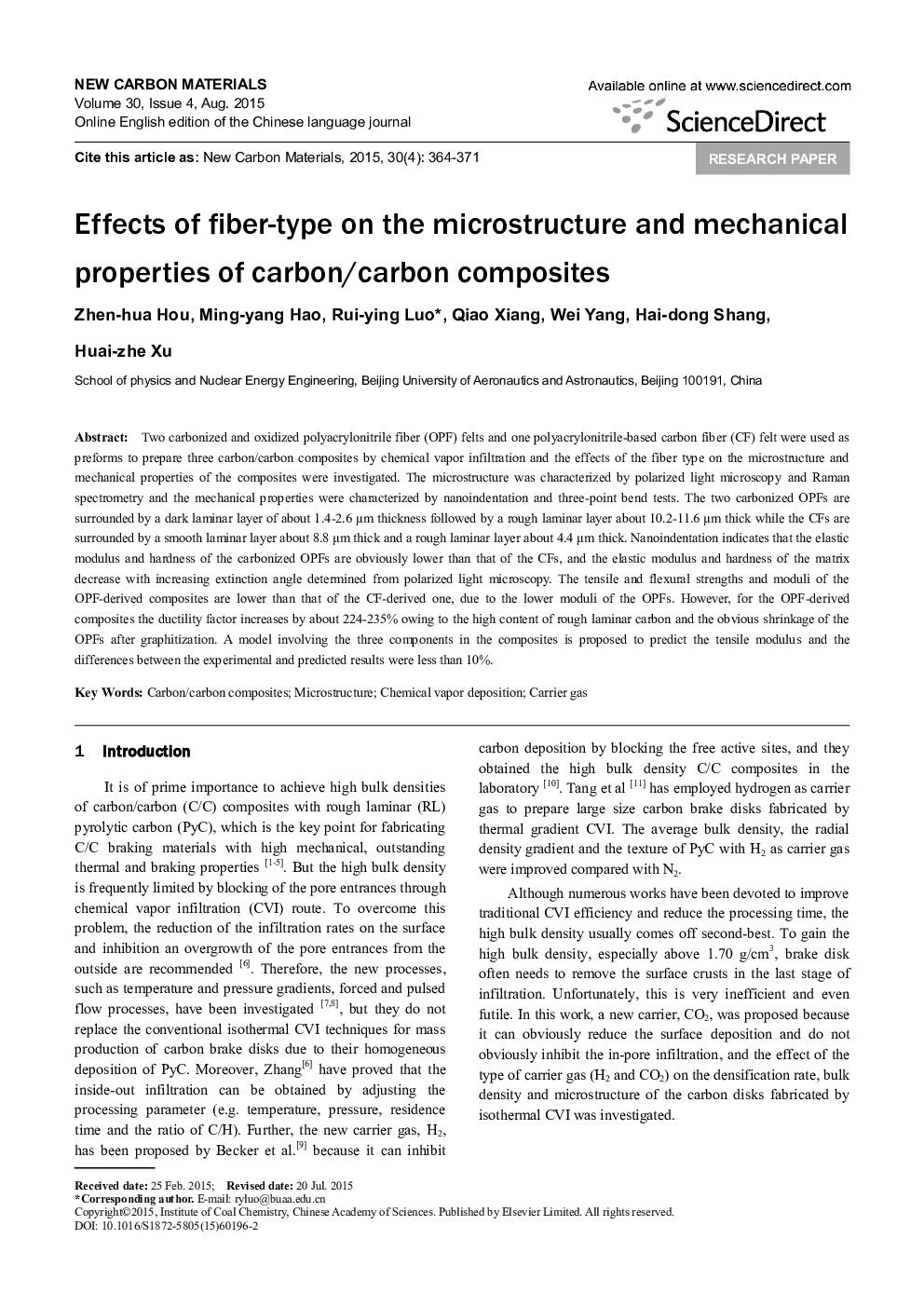| Article ID | Journal | Published Year | Pages | File Type |
|---|---|---|---|---|
| 1558330 | New Carbon Materials | 2015 | 7 Pages |
Abstract
Two carbonized and oxidized polyacrylonitrile fiber (OPF) felts and one polyacrylonitrile-based carbon fiber (CF) felt were used as preforms to prepare three carbon/carbon composites by chemical vapor infiltration and the effects of the fiber type on the microstructure and mechanical properties of the composites were investigated. The microstructure was characterized by polarized light microscopy and Raman spectrometry and the mechanical properties were characterized by nanoindentation and three-point bend tests. The two carbonized OPFs are surrounded by a dark laminar layer of about 1.4-2.6 μm thickness followed by a rough laminar layer about 10.2-11.6 μm thick while the CFs are surrounded by a smooth laminar layer about 8.8 μm thick and a rough laminar layer about 4.4 μm thick. Nanoindentation indicates that the elastic modulus and hardness of the carbonized OPFs are obviously lower than that of the CFs, and the elastic modulus and hardness of the matrix decrease with increasing extinction angle determined from polarized light microscopy. The tensile and flexural strengths and moduli of the OPF-derived composites are lower than that of the CF-derived one, due to the lower moduli of the OPFs. However, for the OPF-derived composites the ductility factor increases by about 224-235% owing to the high content of rough laminar carbon and the obvious shrinkage of the OPFs after graphitization. A model involving the three components in the composites is proposed to predict the tensile modulus and the differences between the experimental and predicted results were less than 10%.
Related Topics
Physical Sciences and Engineering
Materials Science
Materials Chemistry
Authors
Zhen-hua Hou, Ming-yang Hao, Rui-ying Luo, Qiao Xiang, Wei Yang, Hai-dong Shang, Huai-zhe Xu,
